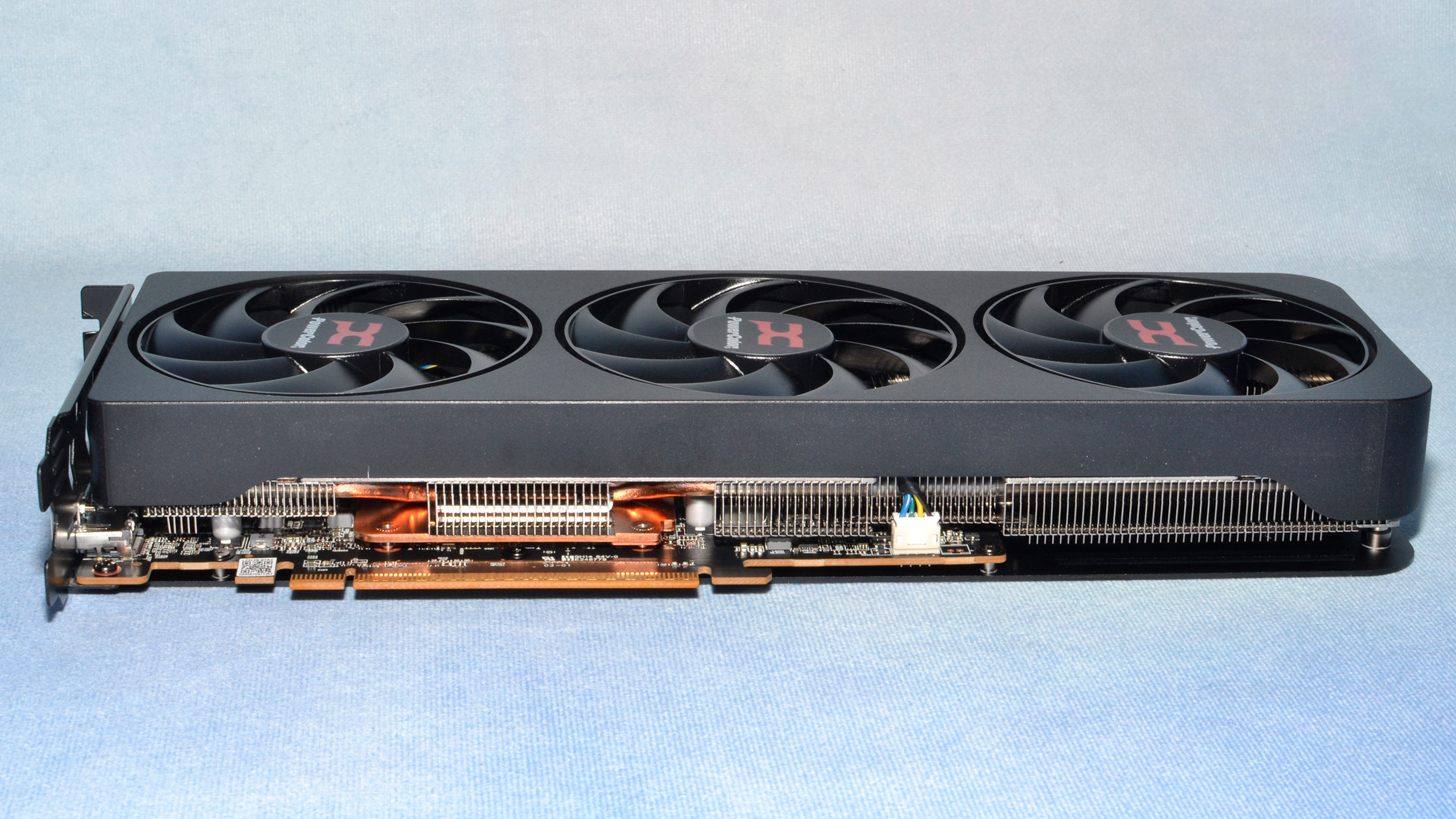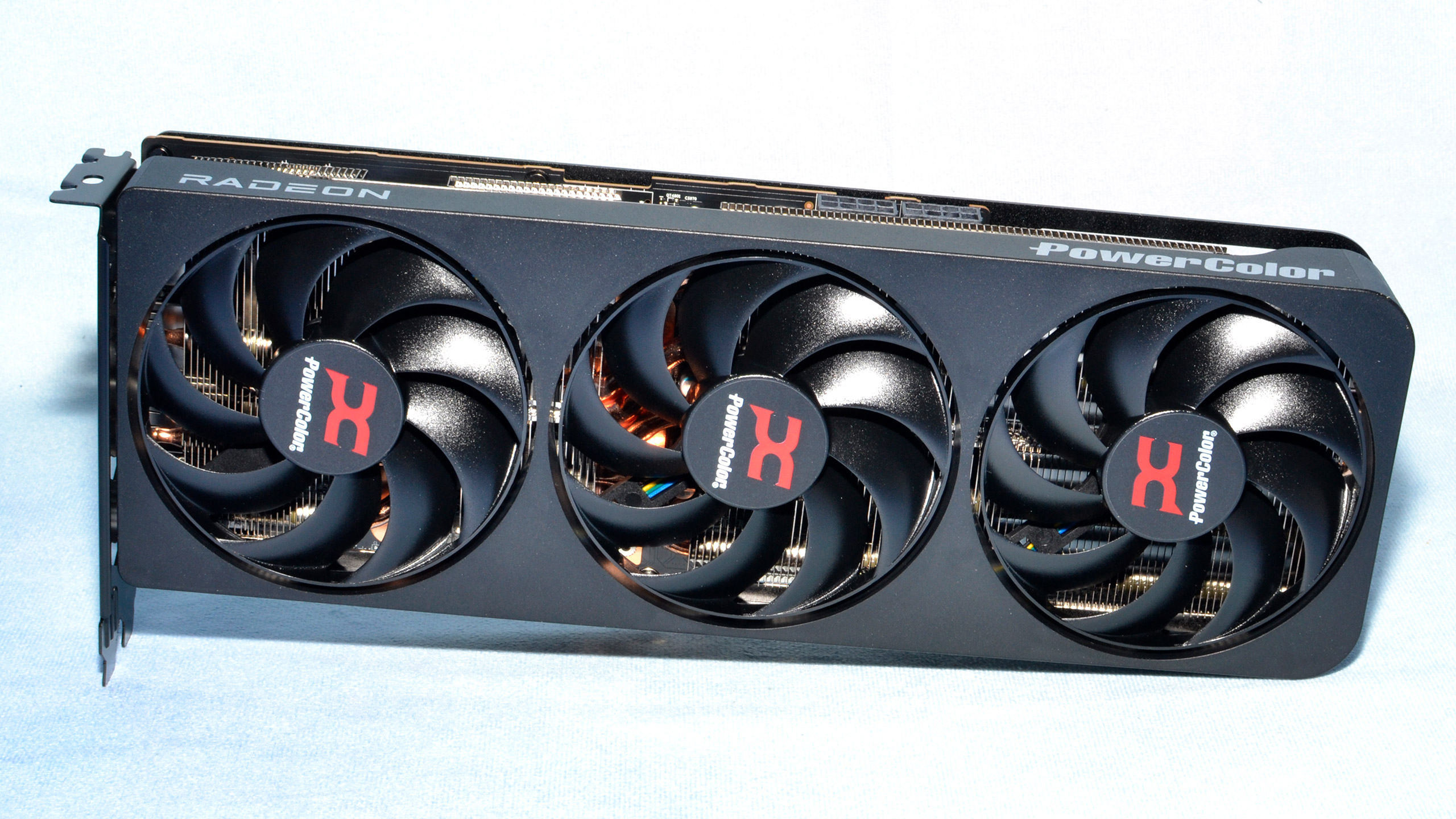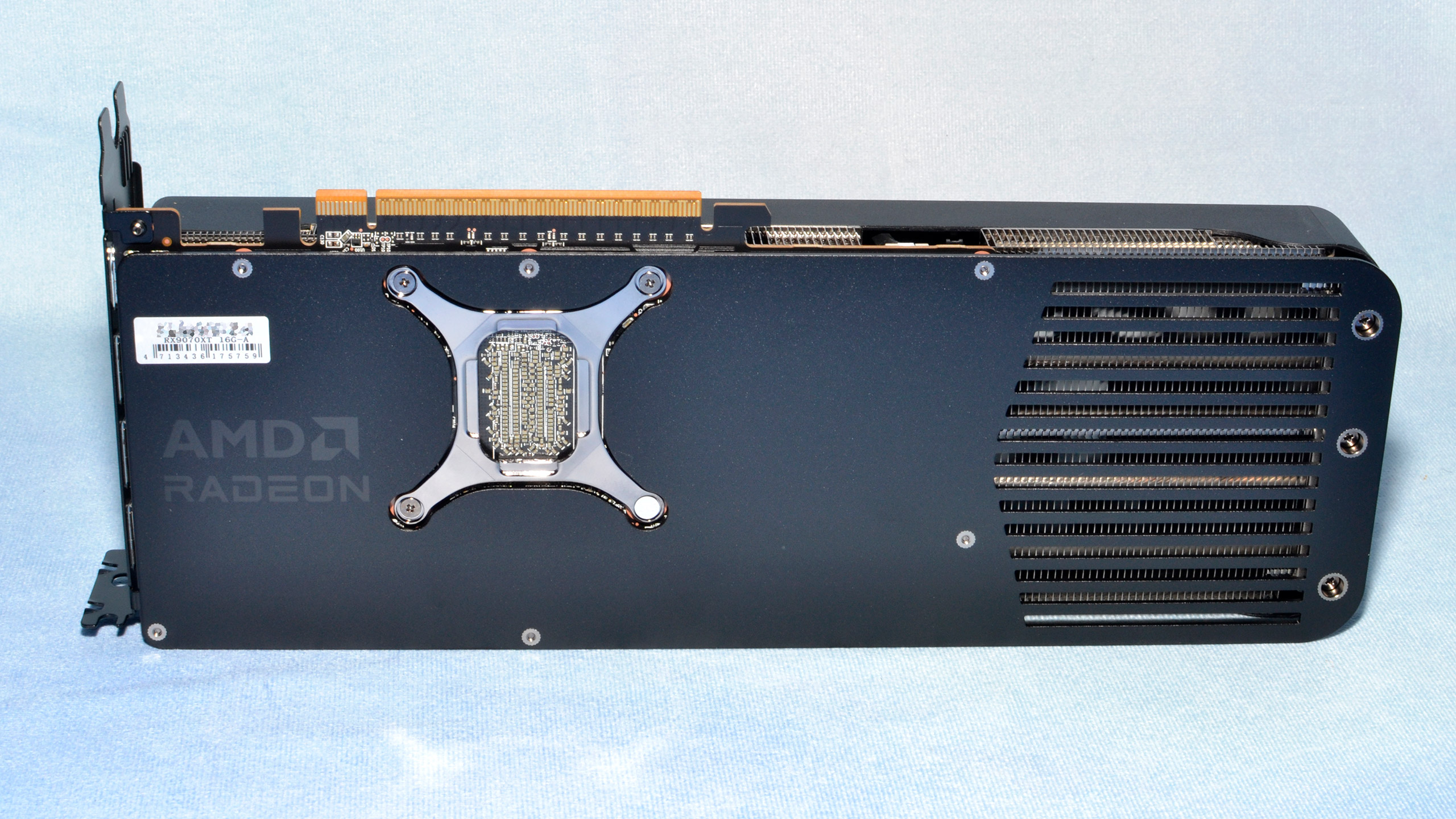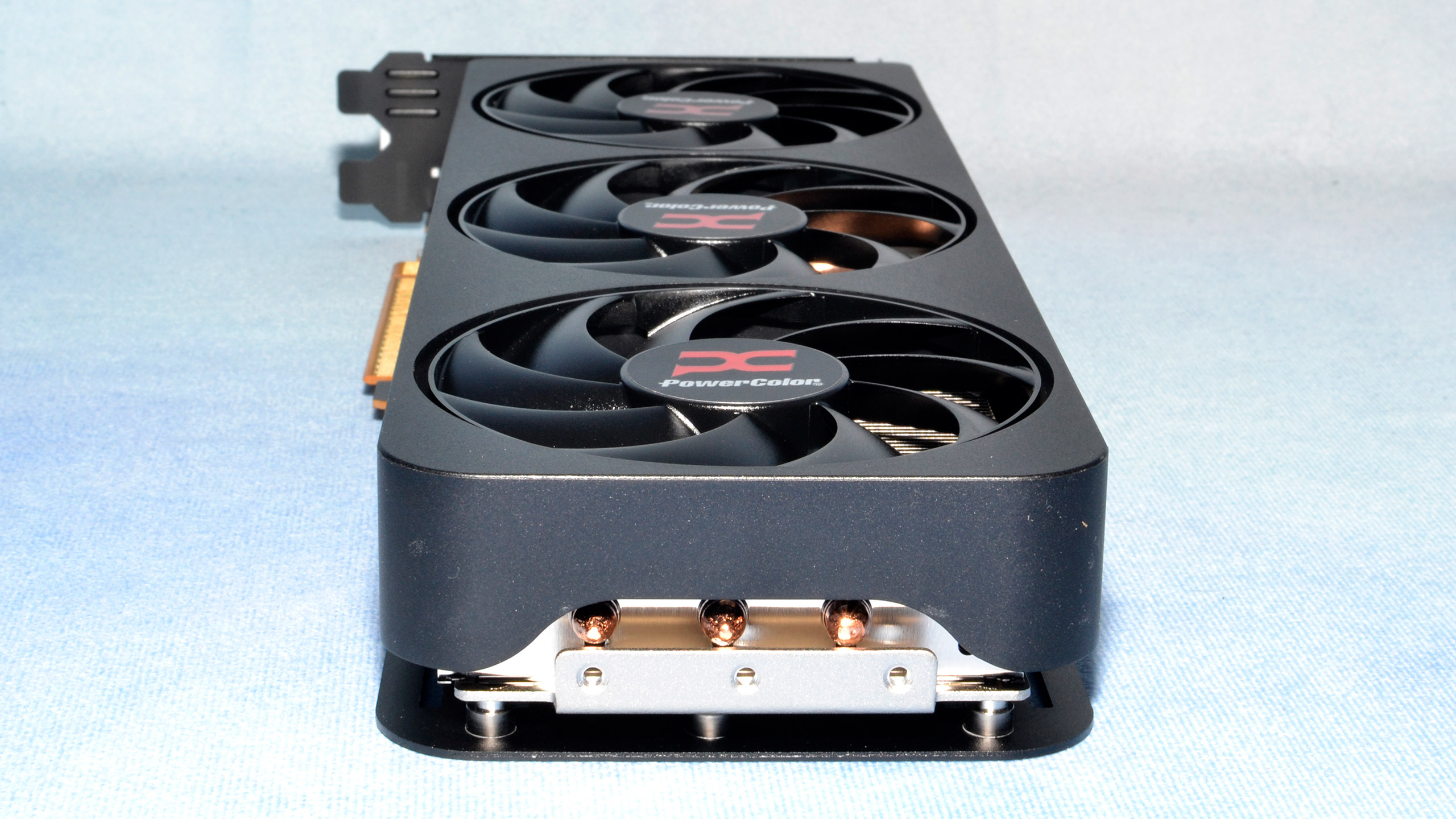Why you can trust Tom's Hardware
AMD Radeon RX 9070 XT and RX 9070: The XT is great, the vanilla card less so
The AMD Radeon RX 9070 XT and RX 9070 represent a big step forward in several areas for AMD. They have significantly improved ray tracing performance, to the point where the RX 9070 XT easily beats the 5070 and comes relatively close to the 5070 Ti. There's also new and improved AI hardware that's not quite as fast as what Nvidia offers, but it should provide some substantial improvements to a variety of workloads. It will also power FSR 4, but we'll have to investigate that more when we have more time.
There's still the question of price and availability. There are a lot of rumors and suggestions that the 9070 cards will have a lot more stock ready for interested buyers than what we've seen from Nvidia, but here's the thing: No one actually knows how many RTX 50-series GPUs have been sold, outside of Nvidia itself. What we do know is that there's massive demand and an ongoing shortage, and it doesn't look like it will clear up any time soon.
Where will prices end up on the RX 9070 XT and 9070 cards? We can only guess. In the meantime, MSRPs are the only thing we can really point to, and AMD has delivered a potentially excellent value proposition with its new GPUs. The 9070 XT, in particular, looks set to be a hot item, as it's roughly 15% faster than the 9070 for 9% more money. It's also only about 5% slower than the RTX 5070 Ti but costs 20% less — in theory.
In practice, of course, Nvidia's RTX 5070 Ti is currently sold out at MSRP and commanding prices of potentially over $1,000. We expect the same thing will happen with the RTX 5070 launch this morning — maybe not the $1,000+ prices, but selling out quickly seems almost inevitable. But we'll have to wait and see what happens.
As we noted with the RTX 5070 review, the fundamental problem right now is one of manufacturing capacity. TSMC has the best 5nm-class and 3nm-class processes right now, and the line of companies wanting to order wafers has gotten very large. Most of the orders are likely going to AI hardware, including Nvidia's Blackwell B200 GPUs, which sell for far higher prices — prices that consumer hardware can't really hope to compete with.
AMD competes for those same wafers. And AMD is also using those same wafers for its Ryzen and EPYC CPUs. The CCDs (Core Compute Dies) in Zen 5 are pretty small compared to the Navi 48 GPUs at only 71 mm^2 versus 357 mm^2. AMD can get about five Zen 5 CCDs from the same wafer that provides a single Navi 48. And Zen 5 CCDs going into Ryzen 7 9800X3D are making far more money per unit for AMD than a Radeon GPU.
AMD also has data center MI300X and MI350X chips, which like Nvidia's Hopper and Blackwell command significantly higher prices. It's not doing the same AI volume as Nvidia, but it has said in the past that the MI product lines and CDNA series have been one of its fastest sales ramps ever. Should it make more data center chips that sell for $10,000 or more, or make more consumer chips that sell for $600 or less?
At the same time, AMD wants to increase its share of the GPU market. It has a far smaller total share than Nvidia, and that share has been trending downward. Intel is also trying to gain market share with its Arc GPUs. So, we could see both companies sacrifice some profit margins to increase their GPU share.

At MSRP, the RX 9070 XT represents an awesome value and a great card in general. Performance is higher than the previous generation RX 7900 XT, pretty much across the board, with a nominal price of $599. If it sells at that price, in quantity, this is about as good as we can expect from the graphics card market right now. Based on that, we've scored it 4.5 stars. Obviously, if prices increase substantially, the desirability of the cards will change.
RX 9070 XT, on paper, delivers a knockout blow to the RTX 5070. More VRAM, up to 25% higher performance, competitive RT, all for just $50 more? What's not to love? Well, as we said, actual retail availability is still unknown and could end up being just as horrible as the RTX 50-series launches so far.
The RX 9070 isn't quite as impressive. Yes, it's faster than the RTX 5070, but not by that much. It also offers more VRAM than the 5070, but conversely, Nvidia offers better software and features. FSR 4 might make AMD more competitive, but DLSS is in far more games than FSR. It ends up being pretty much a wash in our book, with real prices being the determining factor.
We're primarily talking about the 9070 XT today, even though we've shown all the 9070 results, so the 4.5-star score doesn't apply to the vanilla card. Unless supply ends up being far better than we're expecting, we're tentatively giving it the same 3.5-star score as the RTX 5070, perhaps a 4.0-star — because it's not that much slower than the XT, it has the same amount of VRAM, and it uses 80W or so less power. We'll finalize that score in a separate review in the coming days, and it could get bumped up half a point based on what happens with the launch tomorrow.
Ultimately, while the performance, on-paper specs, and pricing look great on many of the new GPUs, the actual prices will end up mattering most. And if you're hoping to buy a new graphics card right now, you really don't have many other options. It's not like there are a bunch of previous-generation cards still taking up retail space that need to be cleared out.
- MORE: Best Graphics Cards
- MORE: GPU Benchmarks and Hierarchy
- MORE: All Graphics Content
Get Tom's Hardware's best news and in-depth reviews, straight to your inbox.
Current page: AMD Radeon RX 9070 XT and RX 9070: The XT is great, the vanilla card less so
Prev Page AMD Radeon RX 9070 XT and RX 9070 Power, Clocks, Temps, and Noise
Jarred Walton is a senior editor at Tom's Hardware focusing on everything GPU. He has been working as a tech journalist since 2004, writing for AnandTech, Maximum PC, and PC Gamer. From the first S3 Virge '3D decelerators' to today's GPUs, Jarred keeps up with all the latest graphics trends and is the one to ask about game performance.
-
Crazyy8 I don't have much money, but I might have just enough for the 9070 XT. I might finally be able to say I have high end hardware! :smile:Reply
Look forward to release, hope it isn't scalped! -
cknobman I'll be online super early to try and snag a $599 9070xt.Reply
Count me in the market share shift over to AMD. -
palladin9479 Now it's all down to availability and how much product AMD can pump into the channel. Anyone trying to buy a dGPU is left with almost no real options other then to pay ridiculous markups to scant supply. If AMD can pump enough product into the channel, then those prices will go down cause well, that's how the supply vs demand curve works.Reply -
Elusive Ruse Thank you for the detailed review and analysis as always @JarredWaltonGPU I’m glad that we finally have a proper offering at the midrange. AMD dealt a powerful blow to Nvidia, maybe a bit late but better than never.Reply
The ball is now in Nvidia’s court, let’s see how much they care about the gaming market, I also believe this is a matter of brand image as well; losing to AMD even if it’s not at the high end still hurts. -
JarredWaltonGPU Reply
Seriously! Well, more like late 2020 or early 2021. Everything is basically sold out right now (though 5070 has a few $599 to $699 models actually in stock right this second at Newegg).Gururu said:Very nice review although the setting feels like a time warp to Dec 2022. -
Colif They are nice cards but I will follow my own advice and not buy a card this generation and see what next brings. Xt beats mine in some games but not all, and since I don't play RT games anyway, I don't think its worth itReply
I am saving for a new PC so it wouldn't make sense to buy one now anyway. Maybe next gen I get one that is same color as new PC will be... -
SonoraTechnical Saw this about the Powercolor Reaper in the article:Reply
PowerColor takes the traditional approach of including three DisplayPort 2.1a ports and a single HDMI 2.1b port. However, the specifications note that only two simultaneous DP2.1 connections can be active at the same time. Also, these are UHBR13.5 (54 Gbps) ports, rather than the full 80 Gbps maximum that DisplayPort 2.1a allows for.
So, 3 monitors using display port for FS2024 is a non-starter? Have to mix technologies (DP and HDMI?) Is this going to be true for most RX 9070 XT cards? -
JarredWaltonGPU Reply
Not by my numbers. AMD said the 9070 XT would be about 10% slower than the 7900 XTX in rasterization and 10% faster in ray tracing. Even if that were accurate, it would still make the 9070 XT faster than the 7900 XT.baboma said:I watched the HUB review, since it came out first. The short of it: 9070XT = 7900XT (not XTX), both in perf and power consumption. So if you think Nvidia (Huang) lied about 5070's perf, then AMD also lied.
394
395 -
Colif The low stock and things being OOS the same day they released reminds me of the 7900 release day. I was too slow to get an XTX but I was happy with an XT.Reply


